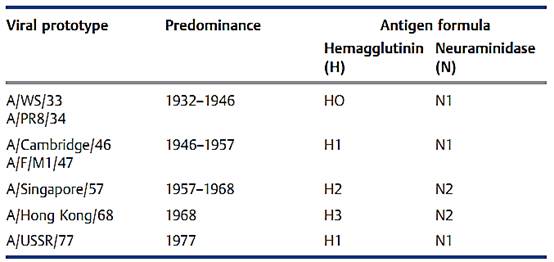

النبات

مواضيع عامة في علم النبات

الجذور - السيقان - الأوراق

النباتات الوعائية واللاوعائية

البذور (مغطاة البذور - عاريات البذور)

الطحالب

النباتات الطبية


الحيوان

مواضيع عامة في علم الحيوان

علم التشريح

التنوع الإحيائي

البايلوجيا الخلوية


الأحياء المجهرية

البكتيريا

الفطريات

الطفيليات

الفايروسات


علم الأمراض

الاورام

الامراض الوراثية

الامراض المناعية

الامراض المدارية

اضطرابات الدورة الدموية

مواضيع عامة في علم الامراض

الحشرات


التقانة الإحيائية

مواضيع عامة في التقانة الإحيائية


التقنية الحيوية المكروبية

التقنية الحيوية والميكروبات

الفعاليات الحيوية

وراثة الاحياء المجهرية

تصنيف الاحياء المجهرية

الاحياء المجهرية في الطبيعة

أيض الاجهاد

التقنية الحيوية والبيئة

التقنية الحيوية والطب

التقنية الحيوية والزراعة

التقنية الحيوية والصناعة

التقنية الحيوية والطاقة

البحار والطحالب الصغيرة

عزل البروتين

هندسة الجينات


التقنية الحياتية النانوية

مفاهيم التقنية الحيوية النانوية

التراكيب النانوية والمجاهر المستخدمة في رؤيتها

تصنيع وتخليق المواد النانوية

تطبيقات التقنية النانوية والحيوية النانوية

الرقائق والمتحسسات الحيوية

المصفوفات المجهرية وحاسوب الدنا

اللقاحات

البيئة والتلوث


علم الأجنة

اعضاء التكاثر وتشكل الاعراس

الاخصاب

التشطر

العصيبة وتشكل الجسيدات

تشكل اللواحق الجنينية

تكون المعيدة وظهور الطبقات الجنينية

مقدمة لعلم الاجنة


الأحياء الجزيئي

مواضيع عامة في الاحياء الجزيئي


علم وظائف الأعضاء


الغدد

مواضيع عامة في الغدد

الغدد الصم و هرموناتها

الجسم تحت السريري

الغدة النخامية

الغدة الكظرية

الغدة التناسلية

الغدة الدرقية والجار الدرقية

الغدة البنكرياسية

الغدة الصنوبرية

مواضيع عامة في علم وظائف الاعضاء

الخلية الحيوانية

الجهاز العصبي

أعضاء الحس

الجهاز العضلي

السوائل الجسمية

الجهاز الدوري والليمف

الجهاز التنفسي

الجهاز الهضمي

الجهاز البولي


المضادات الميكروبية

مواضيع عامة في المضادات الميكروبية

مضادات البكتيريا

مضادات الفطريات

مضادات الطفيليات

مضادات الفايروسات

علم الخلية

الوراثة

الأحياء العامة

المناعة

التحليلات المرضية

الكيمياء الحيوية

مواضيع متنوعة أخرى

الانزيمات
Orthomyxoviruses
المؤلف:
Kayser, F. H
المصدر:
Medical Microbiology
الجزء والصفحة:
20-11-2015
3025
Orthomyxoviruses
The representatives of this family are the different influenza A viruses. The A type is the most important of the three. It is the pathogen responsible for epidemics and pandemics, since its antigenicity structure changes within a narrower range due to point mutations (more frequent) and within a broader range due to recombination (less frequent). Type B tends to be endemic and type C is very rare. Influenza viruses are the classic flu pathogens, whereby the clinical picture is often characterized by bacterial superinfections as well.
Diagnosis: isolation in cell cultures, serology later in the course of the infection.
Prevention: dead vaccine for high-risk persons, e.g., with circulatory diseases.
Pathogen. This family has one genus, Influenza virus, with the three types influenza A, B, and C. Influenza A is by far the most important and most frequently observed influenza virus. It repeatedly causes epidemics and even pandemics at greater intervals, in contrast to influenza B, which tends to persist in endemic form and causes few outbreaks. Influenza C is rarely isolated, most frequently in youths. It plays on a minor role as an infective pathogen.
Pathogenesis and clinical picture. The aerogenically transmitted influenza viruses normally replicate in the mucosa of the nasopharynx, resulting in a pharyngitis or at most a tracheobronchitis, after an incubation period of 24-72 hours. Pulmonary dissemination of the infection can result from an upper respiratory infection or manifest without one, whereby the prognosis in the latter case is less favorable. Pneumonia caused solely by the influenza virus is rare. As a rule, bacterial superinfections with staphylococci, streptococci, pneumococci, or Haemophilus bacteria are responsible. These infections, which used to be the normal cause of influenza deaths (Haemophilus influenzae in the “Spanish flu” of 1918), can be controlled with antibiotics.
Diagnosis. Influenza viruses can be grown and isolated in cell cultures if the diagnostic specimen is obtained very early, i.e., in the first one or two days of the infection. Throat lavages and swabs provide suitable material. The latter must be placed in a suitable transport medium without delay to prevent them from drying out. Identification of the cultured viruses is achieved based on the hemagglutinating properties of the myxoviruses in the hemagglutination inhibition test or by means of immunofluorescence.
If the specimen was obtained too late for virus isolation, a diagnosis can be arrived at by serological means, whereby a rise in the antibody titer of patient serum proves infection.
Epidemiology. Influenza A viruses are genetically variable. Slight antigenic changes are the general rule (antigenic drift, quasispecies, p. 391) and are explained by selection of point mutants in the hemagglutinin under immunological pressure. More profound changes (antigenic shifts) explain the periodic occurrence of influenza A epidemics and pandemics (Table 1).
Table 1 Classification and Antigen Structure of Influenza A Viruses

Prevention and therapy. An inactivated adsorbate vaccine and some split vaccines (new: intranasal application) are available for influenza prophylaxis. The vaccine is recommended especially for persons whose occupation exposes them to such infections as well as persons with cardiovascular problems in their medical histories.
The therapeutic options include amantadine, which inhibits the viral uncoating process, and more recently neuraminidase inhibitors. These substances shorten the duration of illness by blocking the release of the viruses from the host cells and their further dissemination in the body.
 الاكثر قراءة في الفايروسات
الاكثر قراءة في الفايروسات
 اخر الاخبار
اخر الاخبار
اخبار العتبة العباسية المقدسة

الآخبار الصحية















 قسم الشؤون الفكرية يصدر كتاباً يوثق تاريخ السدانة في العتبة العباسية المقدسة
قسم الشؤون الفكرية يصدر كتاباً يوثق تاريخ السدانة في العتبة العباسية المقدسة "المهمة".. إصدار قصصي يوثّق القصص الفائزة في مسابقة فتوى الدفاع المقدسة للقصة القصيرة
"المهمة".. إصدار قصصي يوثّق القصص الفائزة في مسابقة فتوى الدفاع المقدسة للقصة القصيرة (نوافذ).. إصدار أدبي يوثق القصص الفائزة في مسابقة الإمام العسكري (عليه السلام)
(نوافذ).. إصدار أدبي يوثق القصص الفائزة في مسابقة الإمام العسكري (عليه السلام)


















